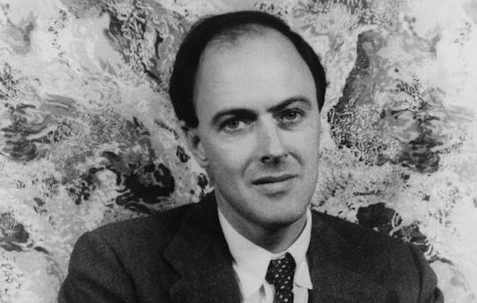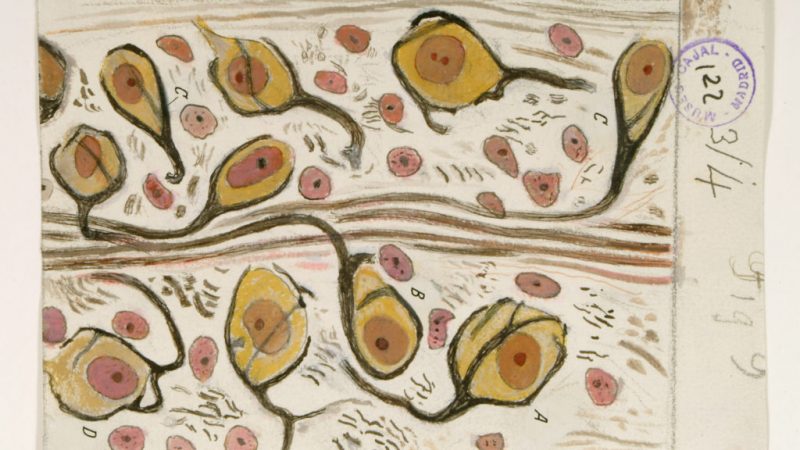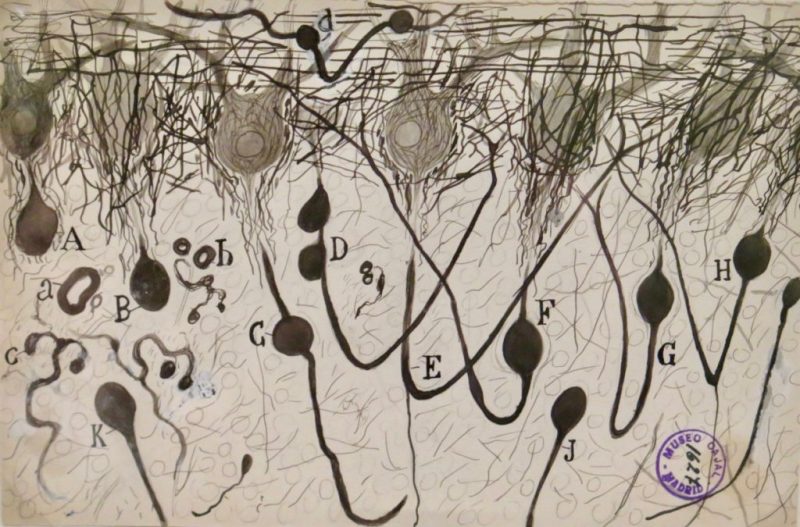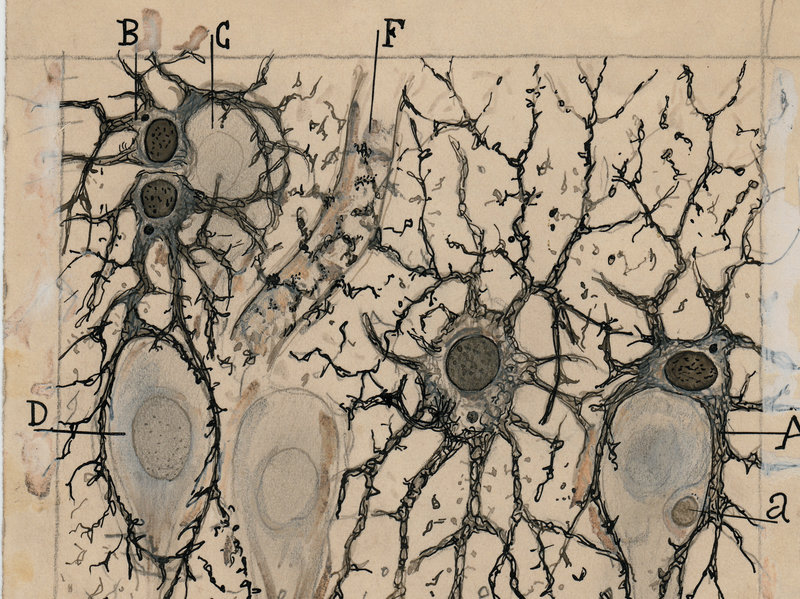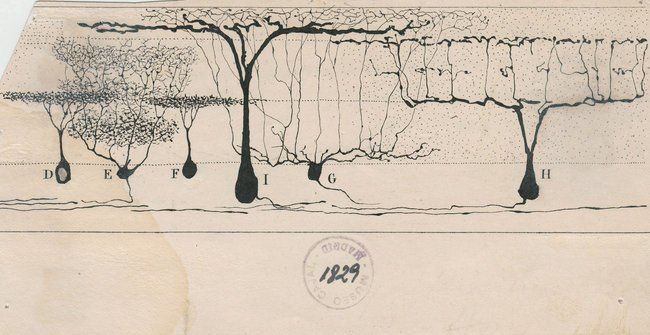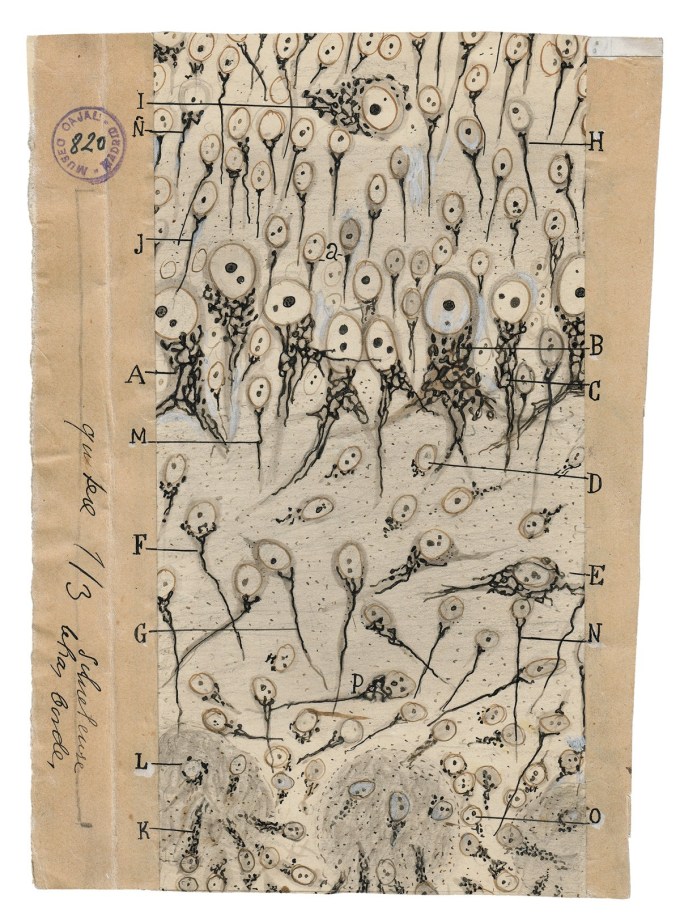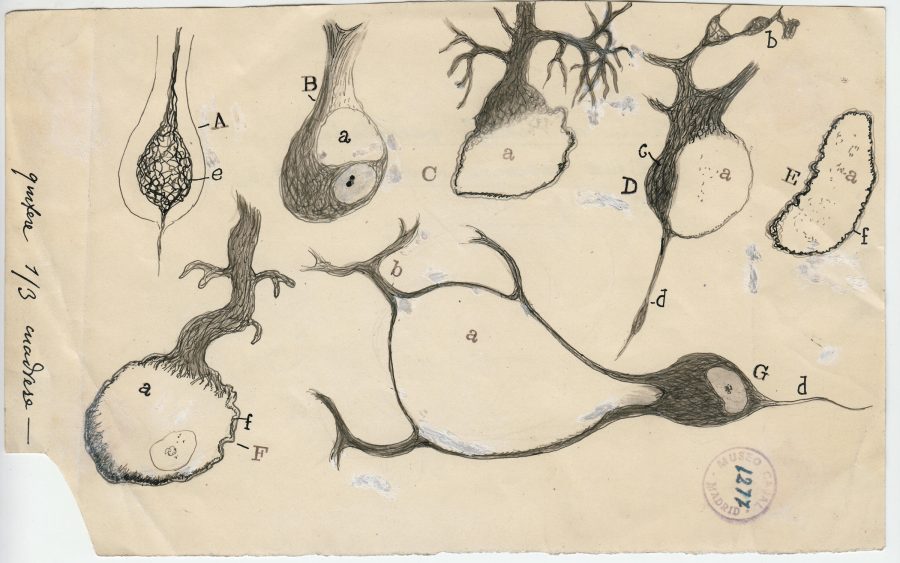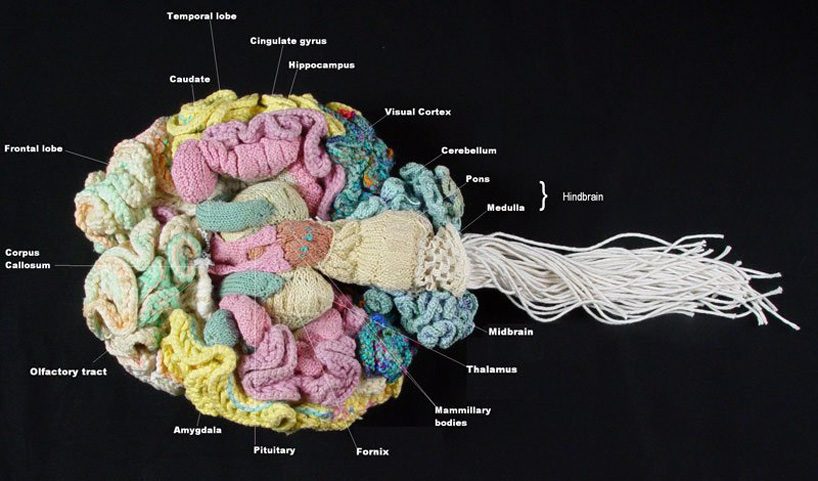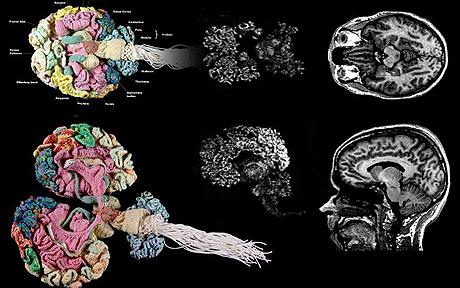Sometimes, when I can’t sleep, I mentally revisit the various homes of my childhood, wandering from room to room, turning on lights and peering in closets until I conk out.
Turns out these imaginary tours are also handy mnemonic tools, as Vox’s Dean Peterson explains above.
Hey, that’s good news… isn’t the subconscious rumored to do some heavy lifting in terms of processing information?
Peterson conquered a self-described bad memory, at least temporarily, by traipsing around his apartment, depositing vivid sentence-by-sentence clues that would eventually help him recite by heart one of his favorite chapters in Moby Dick.
In truth, he was planting these clues in his hippocampus, the relatively small structure in the brain that’s a critical player when it comes to memory, including the spatial memories that allow us to navigate familiar locations without seeming to give the matter any thought.
What made it stick was pairing his everyday coordinates to extraordinary visuals.
Chapter 37, for those keeping track at home, is a monologue for Captain Ahab in which he describes himself as not just mad but “madness maddened.” Here’s the first sentence:
I leave a white and turbid wake; pale waters, paler cheeks, where’er I sail.
Not the easiest text for 21st-century heads to wrap around, though with a little effort, most of us get the gist.
Let’s not get hung up on literary interpretation here, though, folks. Having settled on his front stoop as the first stop of his memory palace Peterson refrained from picturing frothy spume lapping at the lowermost step. Instead he plunked down a funeral wreath and director John Waters, pale of suit and cheek, weeping. Get it? White? Wake? Pale cheeks?
After which Peterson moved on to the next sentence.
There are 38 in all, and after several days of practice in which he mentally walked the image-strewn course of his apartment-cum-Memory Palace, Peterson was able to regale his coworkers with an off-book recitation.
The time factor will definitely be a let down for those hoping for a low commitment party trick.
Peterson spent three-to-four hours a day pacing his spatial memory, admiring the oddities he himself had placed there.
The incredulous comments from those questioning the efficiency of giving up half a day to memorize a page and a half are balanced by testimonials from those who’ve met with success, using the Memory Palace method to retain vast amounts of data prior to an exam.
That may, ultimately, be a better use of the Memory Palace. Peterson gets an A for spitting out the lines as written, but his expression is that of an actor auditioning with material he has not yet mastered. (No shade on Peterson’s acting talent or lack thereof—even great actors get this face when their lines are shaky. One friend doesn’t consider herself off book until she can get all the way through her monologue whilst hopping on one foot.)
For more information on building a Memory Palace, refer, as Peterson did, to author Joshua Foer’s Moonwalking With Einstein: The Art and Science of Remembering Everything, or to his appearance on Adam Grant’s TED Work/Life podcast. Stream it here:
If you would like to go whale to whale with Peterson, below is the text that he installed in his Memory Palace, compliments of Herman Melville:
I leave a white and turbid wake; pale waters, paler cheeks, where’er I sail. The envious billows sidelong swell to whelm my track; let them; but first I pass.
Yonder, by ever-brimming goblet’s rim, the warm waves blush like wine. The gold brow plumbs the blue. The diver sun- slow dived from noon- goes down; my soul mounts up! she wearies with her endless hill. Is, then, the crown too heavy that I wear? this Iron Crown of Lombardy. Yet is it bright with many a gem; I the wearer, see not its far flashings; but darkly feel that I wear that, that dazzlingly confounds. ‘Tis iron- that I know- not gold. ‘Tis split, too- that I feel; the jagged edge galls me so, my brain seems to beat against the solid metal; aye, steel skull, mine; the sort that needs no helmet in the most brain-battering fight!
Dry heat upon my brow? Oh! time was, when as the sunrise nobly spurred me, so the sunset soothed. No more. This lovely light, it lights not me; all loveliness is anguish to me, since I can ne’er enjoy. Gifted with the high perception, I lack the low, enjoying power; damned, most subtly and most malignantly! damned in the midst of Paradise! Good night-good night! (waving his hand, he moves from the window.)
‘Twas not so hard a task. I thought to find one stubborn, at the least; but my one cogged circle fits into all their various wheels, and they revolve. Or, if you will, like so many ant-hills of powder, they all stand before me; and I their match. Oh, hard! that to fire others, the match itself must needs be wasting! What I’ve dared, I’ve willed; and what I’ve willed, I’ll do! They think me mad- Starbuck does; but I’m demoniac, I am madness maddened! That wild madness that’s only calm to comprehend itself! The prophecy was that I should be dismembered; and- Aye! I lost this leg. I now prophesy that I will dismember my dismemberer. Now, then, be the prophet and the fulfiller one. That’s more than ye, ye great gods, ever were. I laugh and hoot at ye, ye cricket-players, ye pugilists, ye deaf Burkes and blinded Bendigoes! I will not say as schoolboys do to bullies- Take some one of your own size; don’t pommel me! No, ye’ve knocked me down, and I am up again; but ye have run and hidden. Come forth from behind your cotton bags! I have no long gun to reach ye. Come, Ahab’s compliments to ye; come and see if ye can swerve me. Swerve me? ye cannot swerve me, else ye swerve yourselves! man has ye there. Swerve me? The path to my fixed purpose is laid with iron rails, whereon my soul is grooved to run. Over unsounded gorges, through the rifled hearts of mountains, under torrents’ beds, unerringly I rush! Naught’s an obstacle, naught’s an angle to the iron way!
Related Content:
Hear Moby Dick Read in Its Entirety by Tilda Swinton, Stephen Fry, John Waters & Others
Play Mark Twain’s “Memory-Builder,” His Game for Remembering Historical Facts & Dates
The Neuroscience & Psychology of Procrastination, and How to Overcome It
Ayun Halliday is an author, illustrator, theater maker and Chief Primatologist of the East Village Inky zine. Join her in New York City May 13 for the next installment of her book-based variety show, Necromancers of the Public Domain. Follow her @AyunHalliday.
